How is gender represented across the books assigned in U.S. colleges? The answer, according to a recent study, is pretty much what you’d anticipate: men still dominate syllabi across the country.
DegreeQuery, an organization dedicated to answering common questions about college degrees and options, as well as developing data-based rankings and reviews of U.S. colleges, dug into the question of most commonly assigned books in U.S. colleges in October 2020. Using OpenSyllabus, the researchers aggregated the books assigned among the eight U.S. Ivy League schools and the top eight public schools as ranked by U.S. News and World Report.
Researchers looked at the most popular books assigned in each of the U.S. states, and then refined their research to the 16 above-noted institutions and five fields of study: political science, business, computer science, economics, and English literature.
Exploring the syllabi of each state’s colleges and universities, you can see the most popularly assigned book. Two of the most popular are writing style guides: The Elements of Style is most frequently assigned in Florida, Tennessee, Arizona, California, Iowa, Massachusetts, and Alaska; A Writer’s Guide is assigned most commonly in Washington, Oregon, Virginia, Alabama, and New Hampshire.
In a single state, Texas’s The American Promise: A History of the United States is included on almost 3,300 syllabi. It’s no surprise that the book is most commonly assigned to politics and social science majors.
After looking at the most commonly assigned books more broadly, the researchers looked at the books assigned by area of study and developed five additional graphics of the most commonly assigned books in each state.
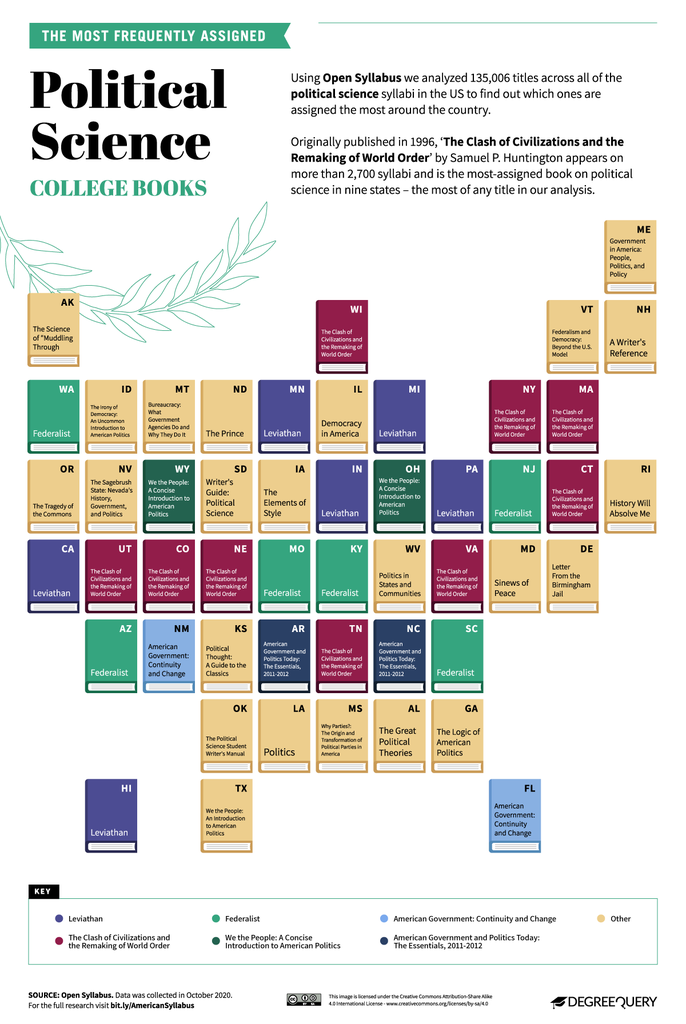
Included on 2,700 syllabi, the most commonly assigned political science book is The Clash of Civilizations and the Remaking of World Order. A state’s political leanings did not impact the book’s popularity.
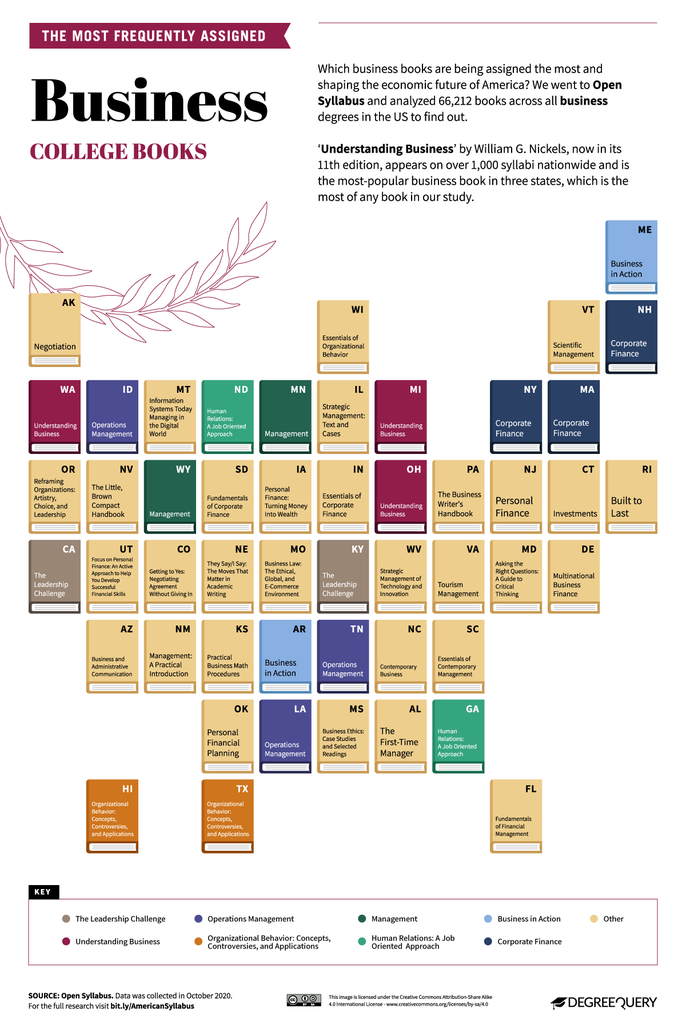
Across business classes, the most frequently assigned title is Understanding Business, assigned on 1,000 syllabi.
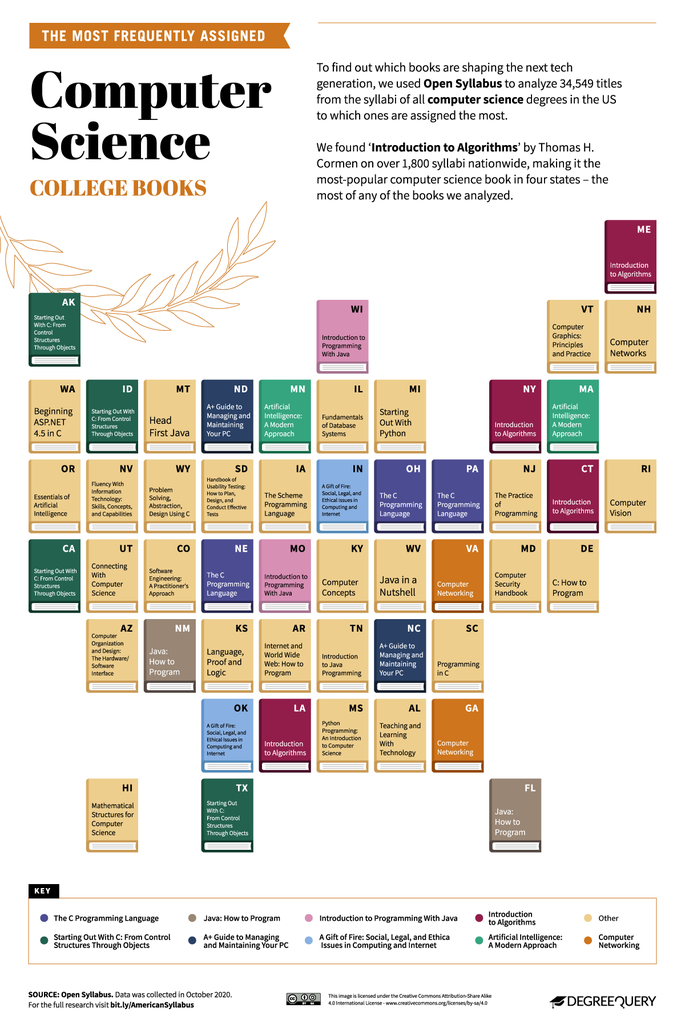
On over 1,800 syllabi for computer science is the book Introduction to Algorithms.
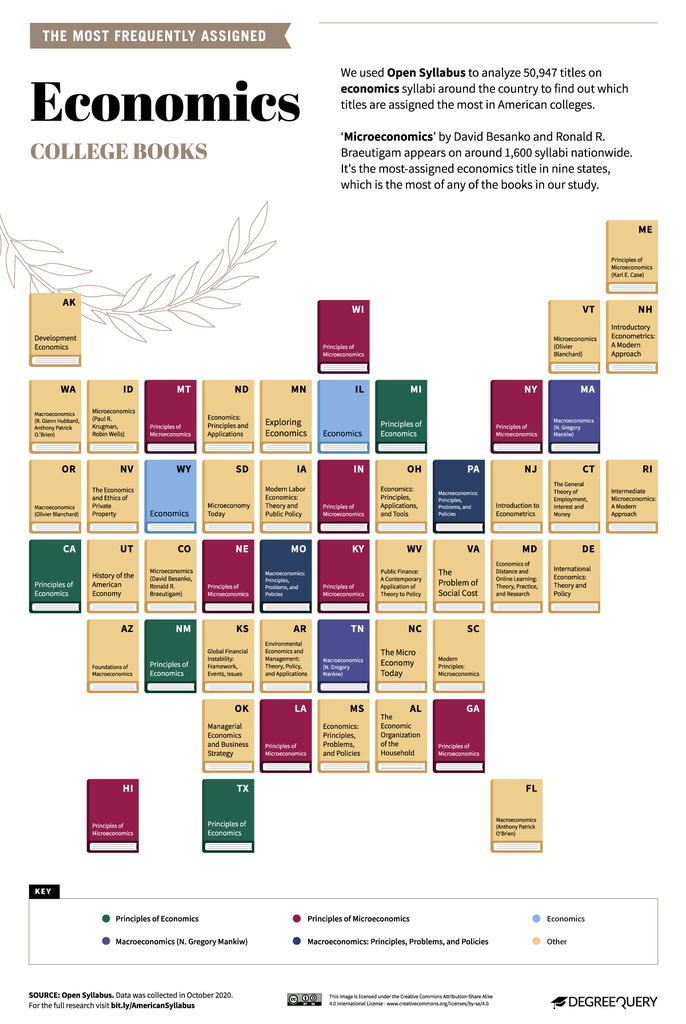
The most common title on economics syllabi across the United States is Microeconomics, appearing on 1,600.
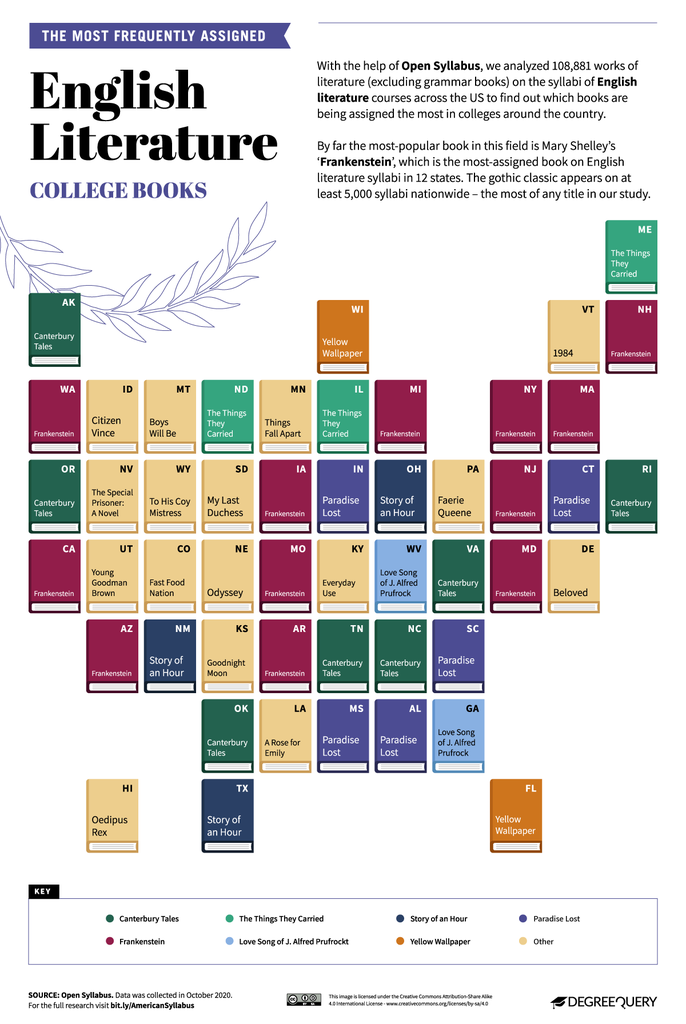
Last, but not least, Frankenstein is the most commonly assigned books across English literature syllabi, at nearly 5,000.
Geography or college type doesn’t matter when it comes to Shelley’s classic: it was assigned equally across the country. The oldest book to be assigned in college classes is Oedipus Rex.
When it comes to differences among Ivy League and top public schools, titles assigned at the former tend to be literary heavy hitters, while those assigned in the latter lean more toward social, political, and economic tomes. Ivy Leagues assigned Thomas Hobbes’s The Levithan most frequently, while public schools assigned Heart of Darkness by Joseph Conrad most frequently.
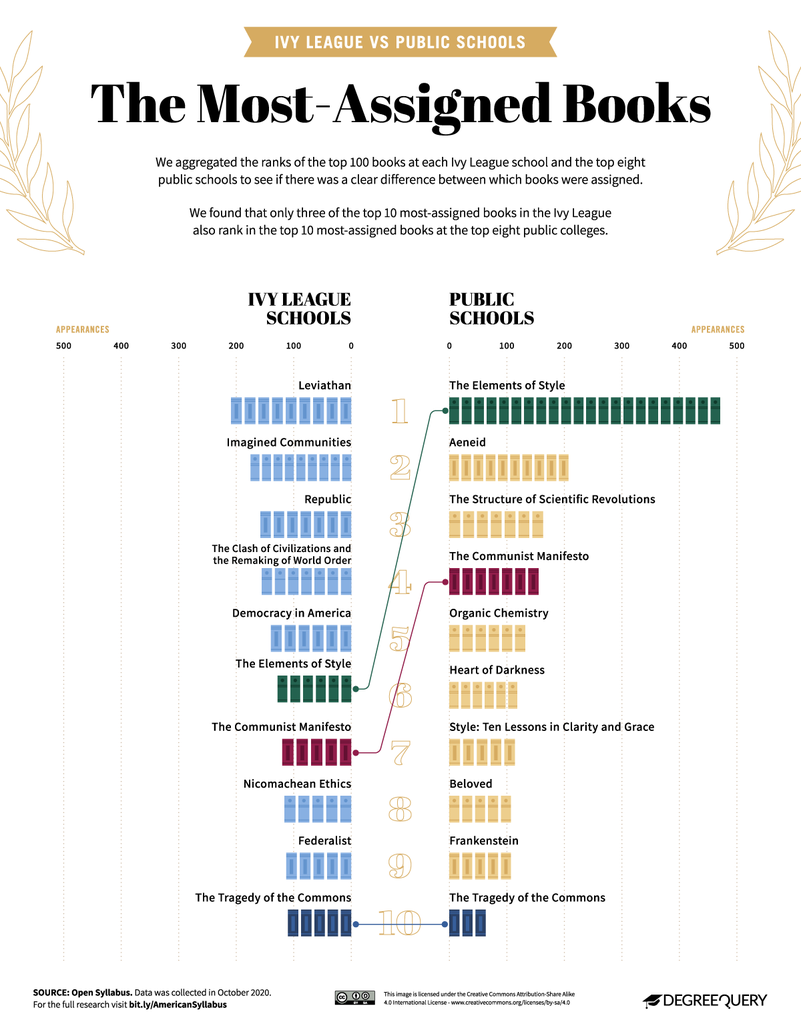
Only three books shared space on the top ten lists of Ivy League and public institutions: The Elements of Style and The Communist Manifesto both ranked higher in public schools, while The Tragedy of the Commons came in at number ten in both.
And of course, there’s a breakdown by subject, too. Some of these titles will be familiar, but it’s interesting to see where they rank among popularity between the school types.
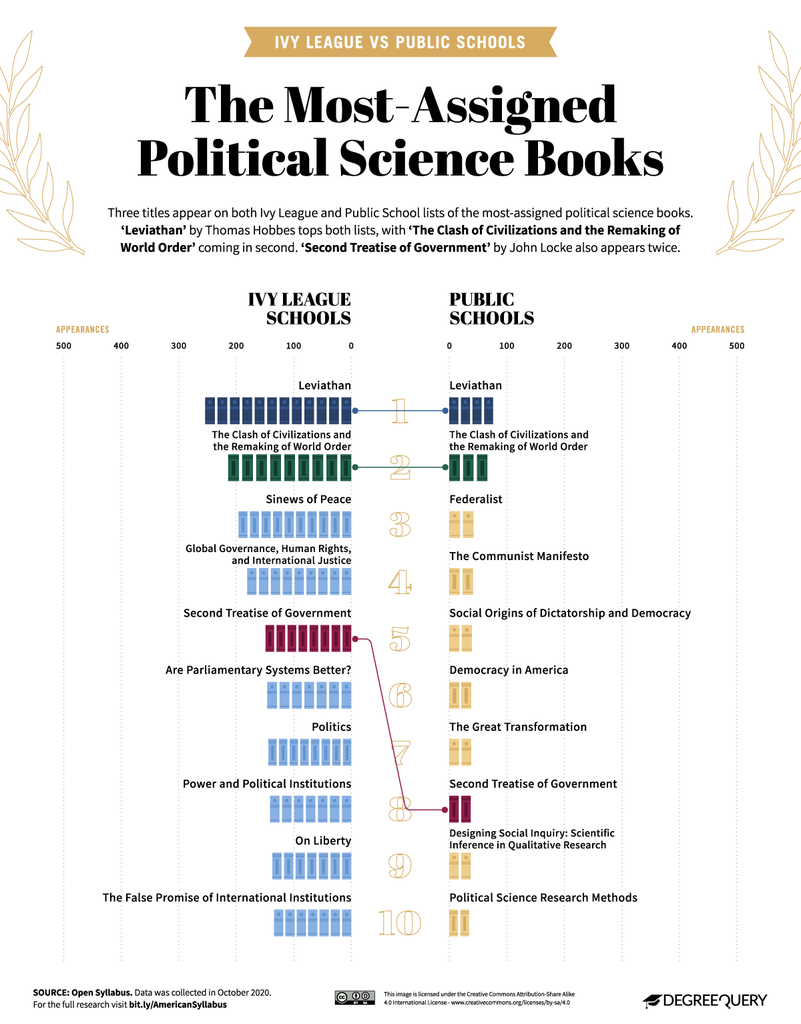
Levithan was most frequently assigned at both Ivy and public schools in political science.
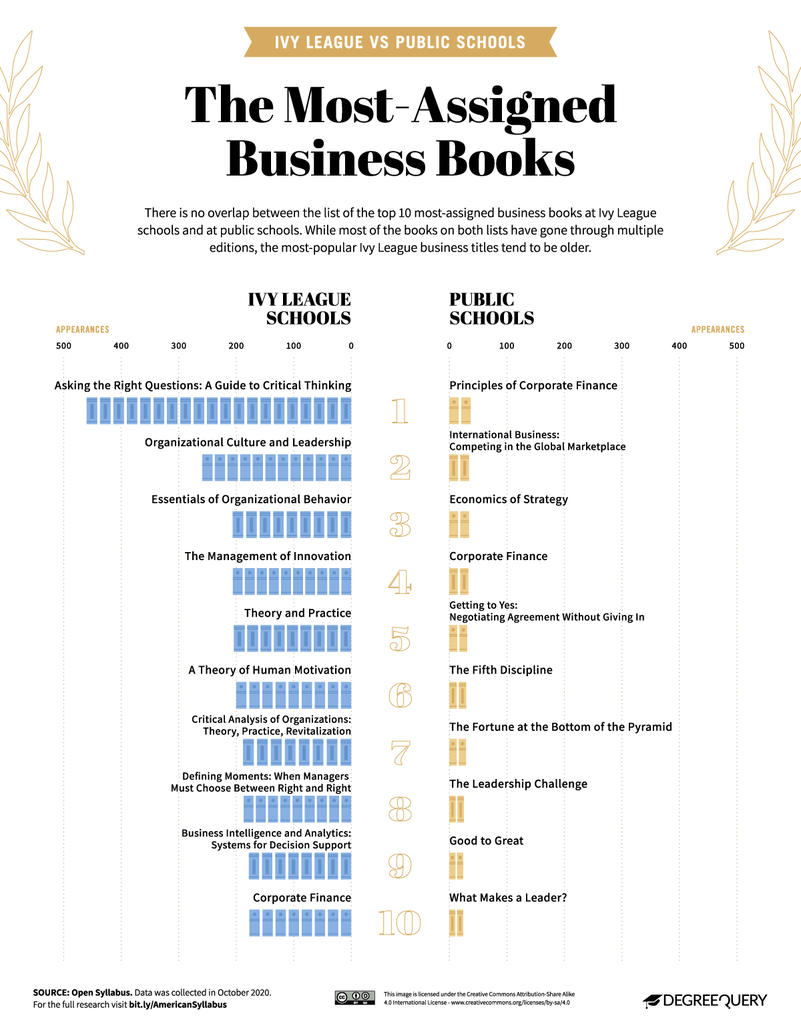
The most frequently assigned business books differ entirely between Ivy League and public institutions. At Ivies, the most commonly assigned title is Asking The Right Questions: A Guide to Critical Thinking, while at public schools it’s Principles of Corporate Finance.
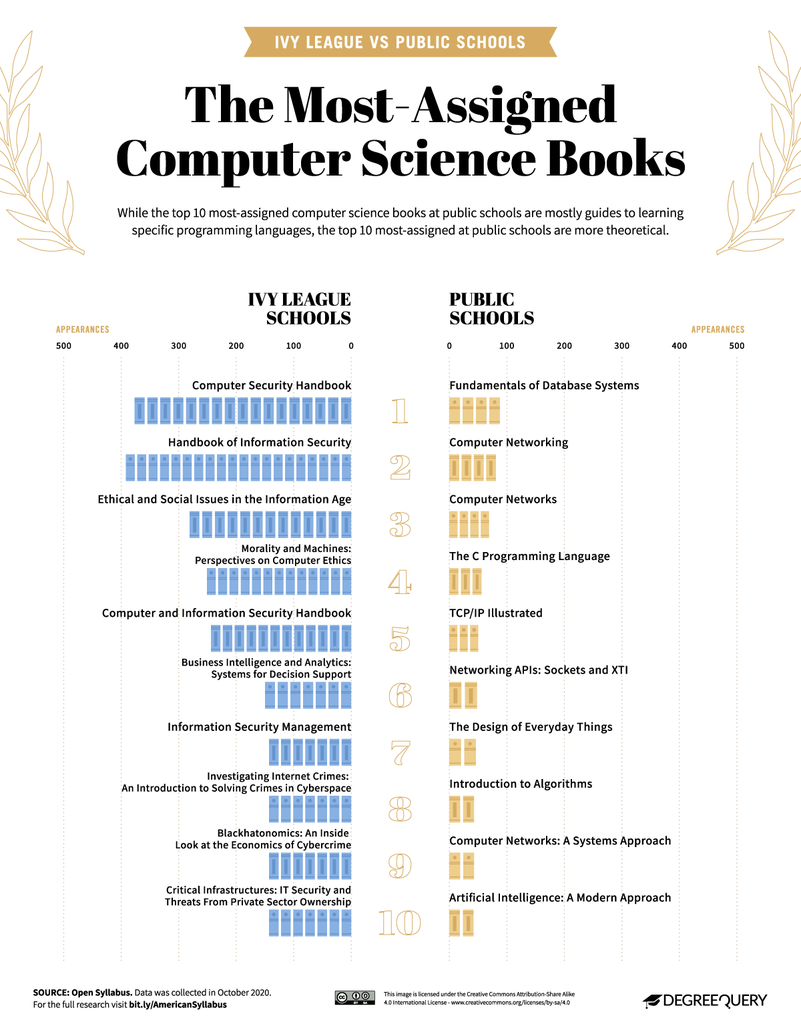
Likewise, all of the most commonly assigned titles differ for computer science. In Ivy League schools, Computer Security Handbook is on top, while for public schools, it’s Fundamentals of Database Systems.
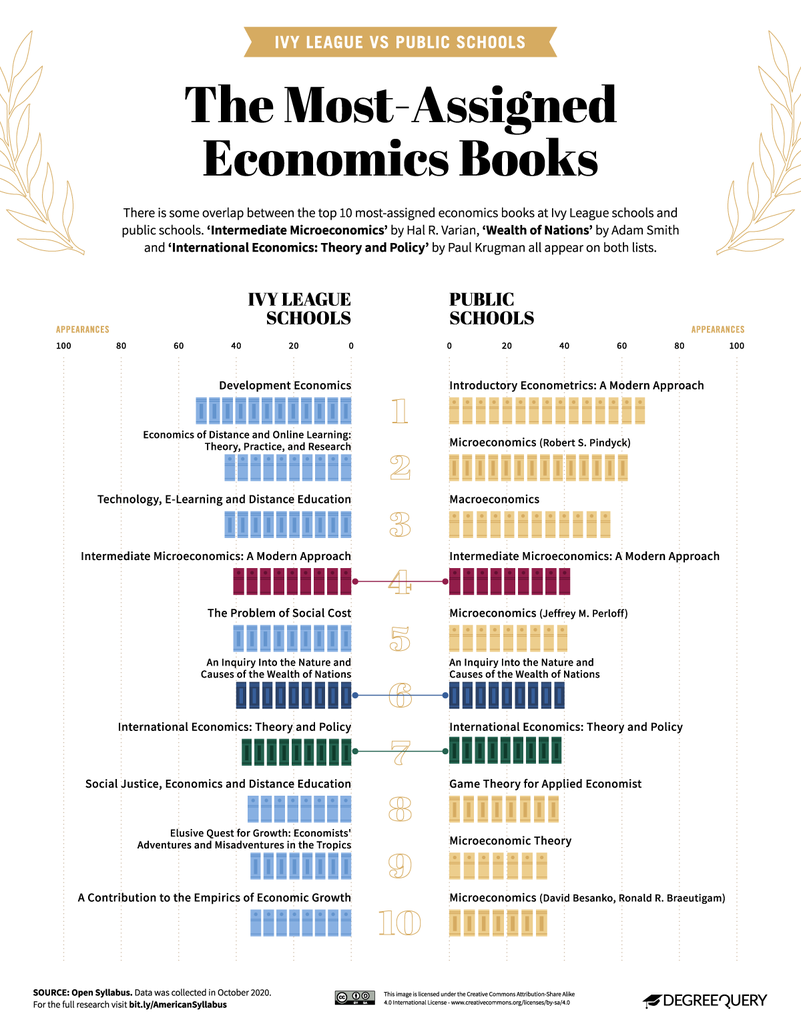
Three titles overlap and share the same ranking when it comes to economics assignments. The top titles, however, aren’t the same, with Ivies electing to assign Development Economics most frequently, and public schools Introductory Economics: A Modern Approach.
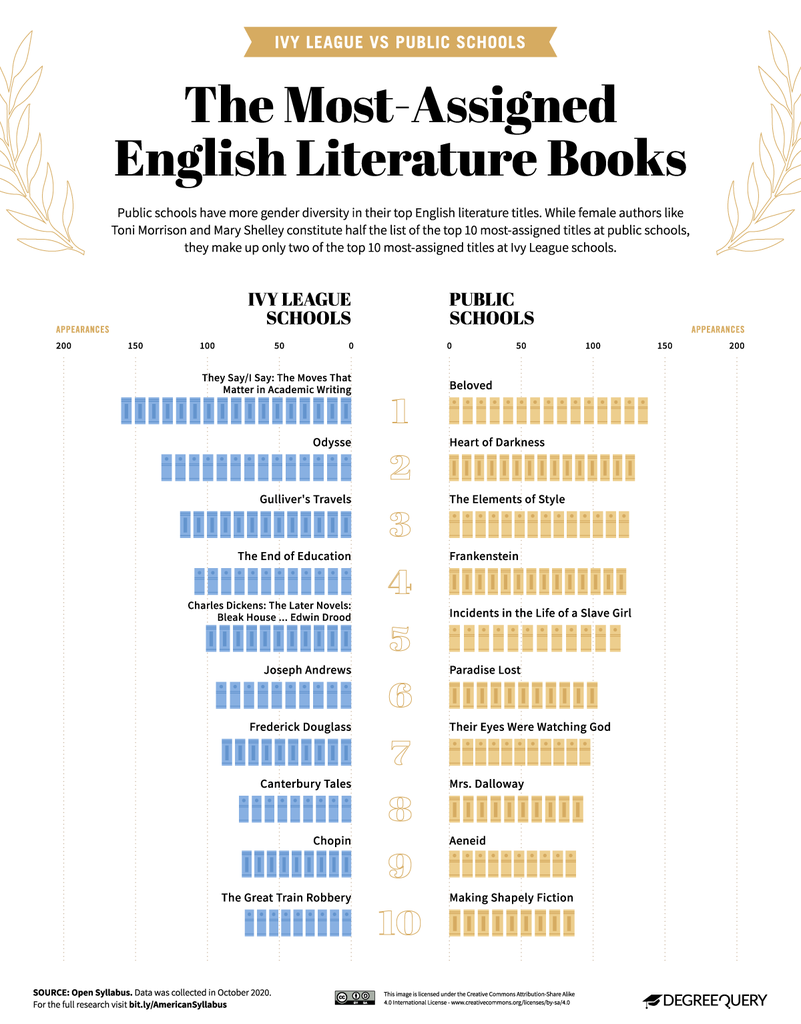
Last, but perhaps most interesting, are the differences in English literature assignments. There are no overlapping titles, and it’s clear that public schools assign a more diverse roster of titles than Ivies. At the top of the Ivy League’s list is They Say/I Say: The Moves That Matter in Academic Writing, while at public schools, it’s Toni Morrison’s Beloved. Ivies assign Frederick Douglass’s work, but it’s the only work by an author of color appearing on the list. For public schools, Incidents in the Life of a Slave Girl and Their Eyes Were Watching God earn a spot, bringing a total of three books by authors of color among the most assigned. Two books by women earn spaces on the Ivy League list—one of whom is a coauthor—while half of the titles on public school syllabi by frequently are by women.
Gender was explored more in-depth during the research and the results are overwhelming and yet, not surprising. Only 20 books out of the top 100 are by a solo female writer. Men wrote 78 of the top 100 titles, while a writing team wrote the two remaining titles.
What’s also noteworthy: of those 20 books by women authors, only six are novels or political treatises—nearly all with an overtly feminist bent. All of the remaining titles were writing guides or nursing handbooks.
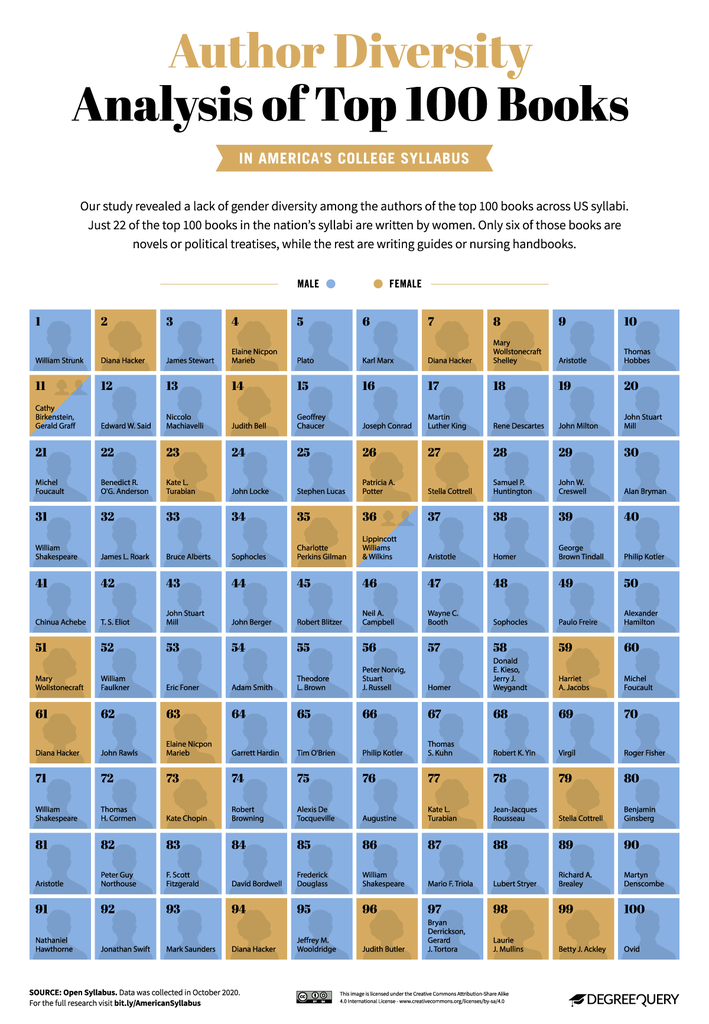
The findings here aren’t surprising, but rather, they reaffirm the reality that the bulk of books being seen as important and worthy of study are those written by men (and, though not studied here, it’s primarily white men). Even among the most elite institutions across the U.S., it’s men who are central to student study and learning. This reinforces the unfortunately common narrative that men write the best books, as well as the most popular and important books; the reality is, these are simply titles being given wider exposure than others and that exposure effect impacts how readers perceive who is—and who isn’t—doing important writing.
In an era where we need more diversity to reflect the realities of our world and of the U.S. specifically, we’ve seen more initiatives by literary advocates and publishing to ensure diverse authors and books are being marketed and championed to the general public. But are these efforts going unnoticed at institutions of higher education? Or is it that ivory towers continue to be patriarchal institutions, with scholars unwilling or uninterested in expanding the books they assign to their students?
Either case is a reminder of how much work is left to be done and how vital it is to continue highlighting the stark differences in who does and does not get their voices seen, heard, and discussed among college students.
For more information about the study, as well as the opportunity to look at more information not included here, DegreeQuery’s research is fully available on their website.










